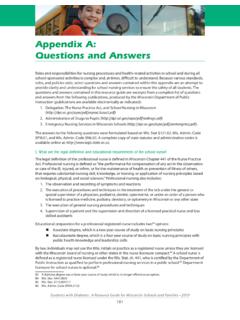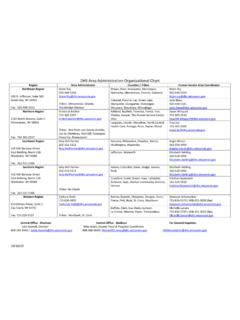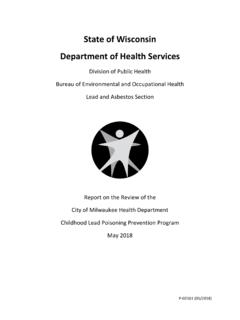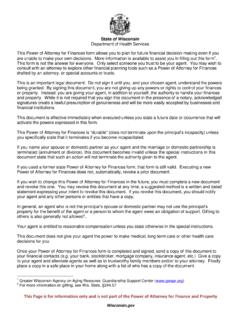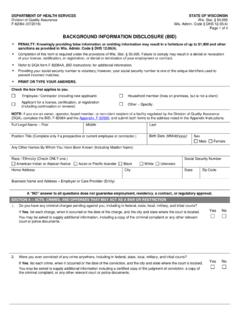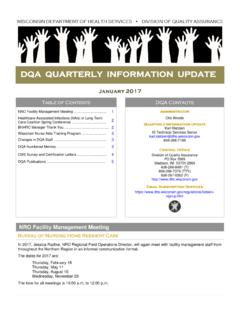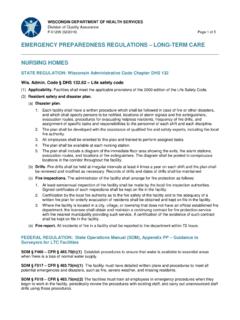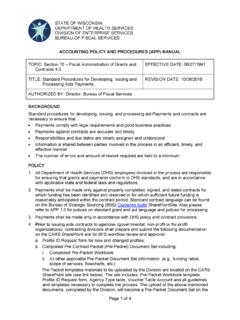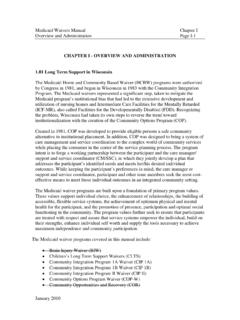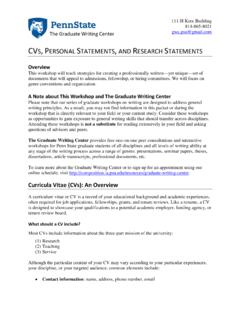Transcription of Intervention Plan Example - Wisconsin Department of Health ...
1 Wisconsin Nutrition, Physical Activity and Obesity Program - February 2009 Local Implementation of the Wisconsin Nutrition and Physical Activity State plan Strategic Planning Example The Wisconsin Nutrition, Physical Activity and Obesity Program and the Wisconsin Partnership for Activity and Nutrition (WI PAN) developed the Wisconsin Nutrition and Physical Activity State plan . The State plan provides a framework to help create and support environments that make it easier for all Wisconsin residents to make healthy food choices, be physically active and achieve and maintain a healthy weight.
2 The State plan emphasizes policy and environmental changes to support individuals in adopting and sustaining healthy lifestyles. Coalitions, organizations, or groups that wish to address obesity in their respective communities should begin by developing a strategic plan that supports the implementation of the Wisconsin Nutrition and Physical Activity State plan through local efforts. Strategic plans are helpful when a group is starting a new initiative or large project or when a group wants to invigorate an older initiative that has lost focus or momentum. Moreover, a strategic plan can be used to help a group focus its resources and energy, to ensure that members of the group are working toward the same goals, and to assess and adjust the group's direction in response to a changing environment.
3 A strategic plan should contain the group s vision, mission, goals and objectives for how it will address obesity. During the strategic planning phase, it is important for your group to develop the following: Member commitment; Sense of mission; Shared values with which to work together; Collective vision; and Goals that can be translated into action and be Therefore, coalitions are expected to develop or have a strategic plan before beginning to design an Intervention (via an Intervention action plan ) to address obesity. Having a strategic plan will ensure that the Intervention (s) are tied back to the group s vision, mission, and goals.
4 For Example , a strategic plan is like the picture on a puzzle box; the Intervention action plans are the puzzle pieces. The strategic plan ensures that all of the puzzle pieces fit together. It is needed to connect all the efforts ( interventions in multiple settings) and to ensure that each of the pieces tie back to the group s vision, mission, and goals for impacting the Health of the community. Tips for a Successful Strategic Planning Process2: Define the purpose and direction: Determine exactly what the coalition/organization/group wants to accomplish and why it is necessary to achieve it through a collaborative.
5 Commit to a unifying mission: The group s mission will require members to agree to share power and resources; individual agendas must be secondary. Involve "key partners" and stakeholders: Identify organizations and community representatives who have similar goals and interests and who will recognize and commit to the benefits of collaboration. Wisconsin Nutrition, Physical Activity and Obesity PrograIn this fictional Example , a group of concerned citizens came together to form the Healthy Communities Coalition of Golden County. Initial members of the newly-formed coalition included a county public Health representative, the local YMCA, and a University of Wisconsin -Extension representative ( Family Living Agent).
6 The group met and decided to begin by doing an asset map of community partners and resources. The asset map identified other potential coalition members and resources, including the need for school district involvement ( a school board member), representatives from Kiwanis (a potential funding source), the Chamber of Commerce, and the local hospital foundation. Local farmers were also identified as a possibility. After the asset mapping was completed, the coalition contacted and encouraged these potential partners to join their efforts. All of the potential partners agreed that preventing overweight and obesity was an important issue to them, and furthermore, demonstrated interest in joining the coalition.
7 Instead of thinking about what types of interventions would be appropriate for their community, the coalition decided it was important to first develop a strategic plan for their future efforts. m - February 2009 Identify potential community partners: Actively recruit and consistently include community members and organizations that will benefit from or be impacted by the collaborative activities. Define roles: Clearly establish the expectations and responsibilities of the coalition/organization/group and its individual members. Each partner must have a clear understanding of what is expected from him/her and his/her organization.
8 Develop decision making processes and ground rules: Design a democratic, inclusive decision making process and firm ground rules that are contributed to and approved by each member and community organization. A memorandum of understanding approved by agency decision makers and community members may be appropriate. Share the leadership: Develop a strong leadership and governance structure. Remember that collaboration requires shared leadership by members. Leaders must be impartial and work in the best interest of the collaborative. Commit to clear and frequent communication: Effective, thorough communication with and between collaborative members is necessary.
9 Implement formal and informal communication tools early on in the collaborative process to inform members of all decisions and activities. Address conflict immediately: Collaboration requires a diverse group of community and agency representatives to work closely together. Conflicts of interest, individual agendas and competition issues will inevitably occur. A conflict resolution process should be developed and approved by members before the first conflict arises. Assess current resources, assets, needs and obstacles: Recognize and build upon existing community strengths and assets.
10 Utilize available services and expertise that currently exist to avoid possible duplication. Identify needs, challenges and obstacles to be addressed. Develop the group s collaborative vision and goals: Strategically plan realistic, specific and attainable goals and objectives, which will support the mission and purpose of the collaborative. Strategic plan Example Below is one Example of how to develop a strategic plan . Of note, there are a few different processes that your group can use to develop a strategic plan . No matter the process that is selected, coalitions are expected to have a strategic plan that contains the group s vision, mission, goals, and objectives prior to designing an Intervention .
